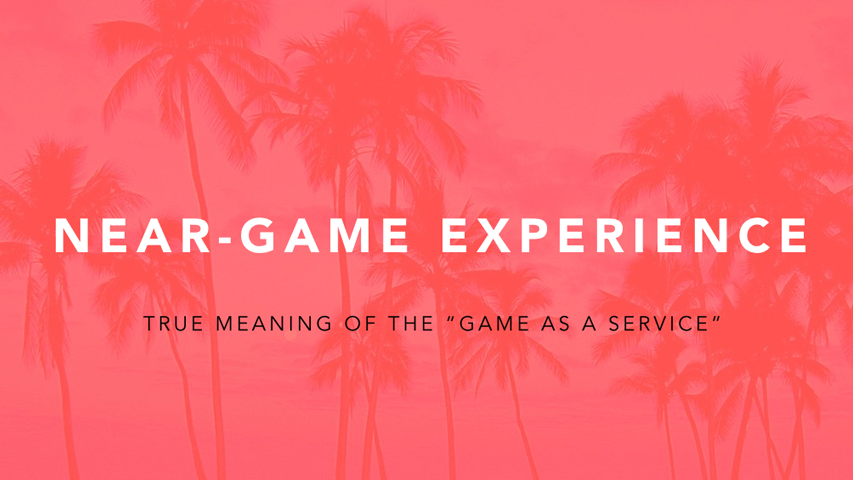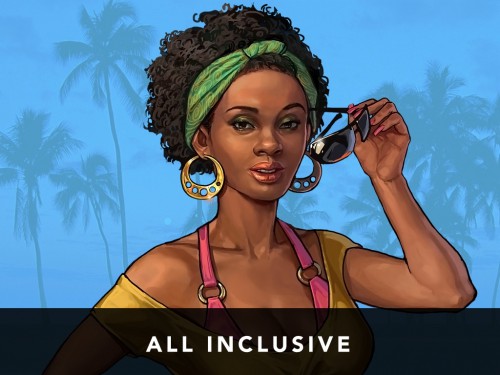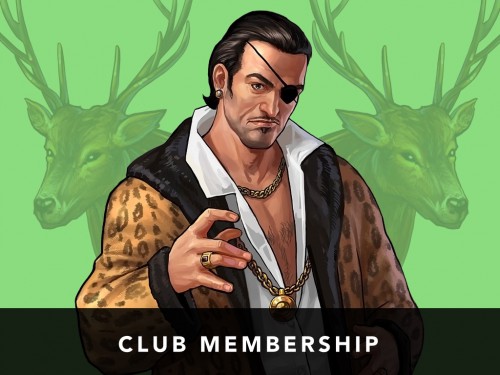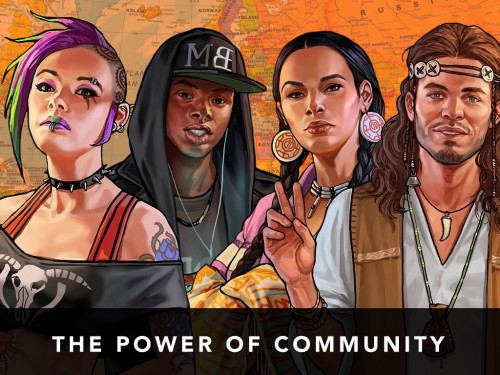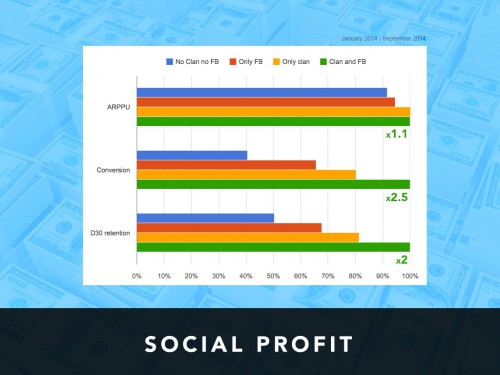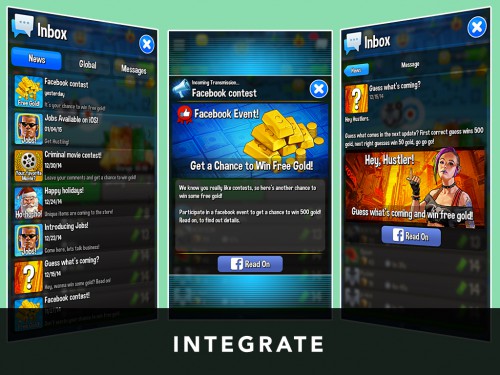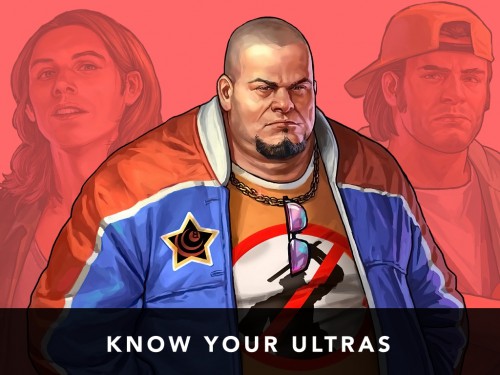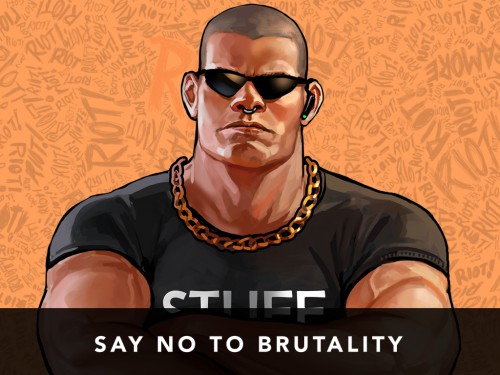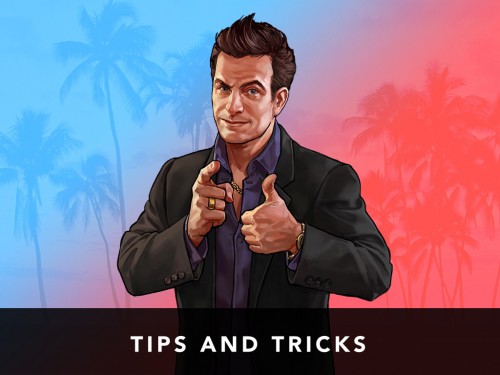Near-game experience: the true meaning of the term "game service"
Ilya Eremeev, Creative Director of A-Steroids, spoke about working with the community at Winter Nights 2015. We are publishing a printed version of his report.
Hello everyone My name is Ilya Yeremeev, I am a creative director at A-Steroids. My specialization and area of interest are midcore and hardcore online games.
A-Steroids is a small Russian-Lithuanian company. One of our offices is located in Klaipeda, and the second is in St. Petersburg. Our biggest projects are: Clash of the Damned with just over 2 million users and the Underworld smuggler simulator currently developing. I would like to share my experience of developing and operating these projects and observing the communities of other games, as well as my vision of the concept of a game as a service and the importance of near-game experience.
It is often said about frituplay games that these are service games, but they put into this concept only the way of development and operation – the constant development and production of an already launched game. I believe that the concept of service extends beyond this framework and includes a full range of entertainment. The gaming experience itself is just a skeleton. The service consists in feeling around the game, community, communication and support.
In other words, such a game should become a habit and part of the player’s personality. The player should feel part of a community or a club of people playing this game. It is important that a person sees that the service extends beyond the game session and feels part of the community, even without playing the game at the moment. This can be compared to clubs of owners of cars of a certain brand, members of a subculture or football fans, where the game itself is just an excuse to communicate in a club of interests.
What is the benefit of the community?
Previously, social and clan activity was the lot of a small group of high-level players, but now, with the development of social and mobile games, social activity becomes natural and mandatory for most players.
By participating in the near-game activity, the user receives justifications for continuing the activity in which he invests time and money. There is a demarginalization of the game process, and the player receives social approval, which has a positive effect on his experience and performance.
The graph below shows a comparison of the indicators of socially integrated players in one of our projects and single players.
As we can see, the conversion rates to payer and retention on day 30 for socially integrated players are up to 2.5 times higher than for singles. The ARPPU of social players is also higher, which in total gives a significant increase in LTV.
It is worth noting that players above level 10 participated in the sample, that is, the influence of the game itself is leveled, and if you look at the full graph, there will be a more significant difference.
So, we came to the conclusion that community is important. How do we create and develop it?
First of all, you should decide on the platform on which you want to create a community. The simplest and most effective option is a Facebook page.
I want to note right away that if your game is not much promoted, then it will be quite difficult to recruit people at the first stage, so I recommend starting to engage in the community as early as possible – at the beta stage or even before the first release, posting teasers and screenshots on the page.
To attract new players to the community, we use classic viral methods – posting game achievements, inviting friends, in-game bonuses for playing with friends.
But it is also important for us to include existing players in the community. To do this, we use the broadcast of community news directly into the game, and, if possible, include links to the page. Even in an error message or server unavailability, we insert a button leading to the community page, and in moments of updates or prevention, we get new community members instead of haters.
The main purpose of all these actions is to push people together, introduce them and make them communicate with each other.
When a certain mass of players has already gathered in the community, special events aimed at activating communication and expanding the audience help well.
For example, a Like&Share contest works well when players are invited to share a link, and with the help of randomness we select several winners who are awarded with in-game currency.
Posts in which players are asked to express their opinion also work great: describe their favorite movie, favorite weapon or character in the game, or suggest what awaits us in the next update. The latter option is especially good, because, among other things, it helps to find out the expectations of the audience from the development of the game.
And now let’s take a closer look at the structure of the community.
The first category worth getting to know is the Ultras, in terms of near-football and Opinion Leaders in our case. These are the most active players, many of whom will be with you from the very beginning and for many months and years.
Such players have a huge influence on the community, are its authorities, so it is critically important to have good relations with them. It depends on your relationship whether you get the most dedicated lawyers or the most stubborn haters. It is worth identifying such people in advance and communicating with them directly, finding out what they like or dislike in the game, and keeping in touch.
The next category is disgruntled players.
It often happens that a person comes to the community for the first time when faced with a problem in the game, and at this moment he can be very angry and negative-minded.
He can scold your game, call you names and accuse you of stealing gold from him, that you are manipulating strong opponents for him, that formulas do not work correctly, and so on.
All this negativity is just an emotional screen behind which lies the real reason for the player’s discontent, and you need to understand it. It is worth showing empathy, telling the player that you understand his feelings, agree that the problem exists and offer to sort it out and help. A case of a successful solution to a player’s problem, and even more so its public solution, will give you points in the eyes of the community, create a good reputation and turn a disgruntled player into a devoted fan.
But there are times when a player’s malice is irrational and he came with the goal of harming you and the community. These are so-called toxic players. The first rule of communication with such players is not to succumb to provocations and not to get involved in his game.
As soon as you get down to his level and start being rude, mocking and insulting him – in response, you will immediately lose your reputation in the eyes of the community and turn the players against yourself. The optimal approach in such cases is the most polite communication, apologizing for the negative emotions caused in a person by your game, accepting his position and trying to bring the conversation to a constructive level
Unfortunately, in some communities (especially Russian-speaking ones) there is a dictatorship of the power administration, when any discussion of the negative aspects of the game, the actions of the administration is prohibited, and the moderators are oprichniks and supervisors.
I believe that such an approach is unacceptable and ineffective. The administration should not be supervisors, but partners and friends of the community. You can not prohibit or delete negative messages and ban unwanted players. The exception is players who insult or threaten other players or the administration. Such cases should be severely suppressed with a public comment on the inadmissibility of such behavior. But “political” censorship in the community is unacceptable and players must be clearly aware of their right to an opinion, positive or critical.
I would like to note that it is extremely important for the project manager, chief designer, producer to listen to the players and participate in the life of the community, especially at its start. Read and respond to all comments in the stores and on the page.
Firstly, it will help you understand what kind of people are playing your game, find your Ultras and develop communication techniques with them, as well as get first-hand feedback from players.
Secondly, not participating in the life of the community and not having a connection with it, you will not be able to delegate this work to the community manager in the future.
And if your community develops, then sooner or later you will have to hire a community manager, since working with the community is very demanding on emotional strength and time.
How do I find a community manager?
This should be an exceptionally stress-resistant and friendly person, preferably with a psychological or pedagogical background. Ideally, if he has experience working with children or training. Any manifestations of aggression, including passive aggression, tightness or power complexes, are absolutely excluded.
It is desirable to create a policy for community management, in which it will be necessary to prescribe the rules of communication with players, how to address them, how to resolve conflicts, to analyze typical situations and their solutions.
The question also arises – to communicate with the players on your own behalf or on behalf of the company?
I am for the option of communication from the avatar of the company and not using the personal communication of the manager with the players.
We had a situation when we had to part with a community manager, but the players got very used to it and took the replacement quite painfully. If we had insisted on the absence of personal communication, the replacement of the manager would have been seamless.
In addition, using one common avatar allows you to consolidate the opinion, present it as the opinion of the team, which also has a positive effect on the relationship with the players.
In the case of technical support, the situation is slightly different, it is permissible to use the personal names of support staff here. This creates the feeling of a personal manager who is engaged in solving the player’s problem.
But I recommend in no case to allow the use of personal communication channels of employees. All communications with players should be under control in your information field. Communication via personal mail, Skype, Facebook and so on is excluded.
Let’s now turn to in-game communities – clans.
As we saw on the graph, clans are important for stimulating players.
How to organize a clan system?
First, you need to decide on the size of the clan. For ourselves, we have determined the optimal cell size – 10 people. This size allows, on the one hand, all members of the clan to get to know each other closely and communicate with each other, and on the other hand, does not allow all active players to get lost in several top clans, stimulates their distribution across a variety of competing cells.
Secondly, it is the organization of joining clans. Initially, we only had a system of applications that the clan leader had to confirm. This required time and synchronization of players and applications were often left unanswered. In the future, we introduced a new type – open clans, where the player was immediately accepted into the clan after submitting an application without confirmation. This significantly increased the share of players in the clans.
Thirdly, it is a protective payment for the creation of a clan. If you open the opportunity to create your own clan at the same time as the opportunity to join a clan, then some players will prefer not to unite with others, but to create their own clan.
On the one hand, this leads to the number of clans created, but on the other hand, it creates a situation where most of the clans are not filled, and we need cells of 10 people.
Therefore, we have a barrier payment, which is essential for the player at the level at which this functionality is opened to him, but becomes feasible with the development of the player and the acquisition of sufficient experience. In this case, players start their clan, having already gained experience in social play and quickly complete their clans.
Well, as a conclusion, a few small tips.
It is worth using tools to aggregate user feedback. We use the Zendesk system, which allows us to collect all the information – support letters, personal messages, comments in the community in one place, it is convenient to work with it and monitor the processing process.
Keep in mind that users prefer personal communication to mail and are more likely to write in person on the page, as it seems to them that it is faster and more efficient, despite the fact that processing takes the same time.
In any case, do not give your personal contacts and try not to interfere in the resolution of issues yourself. As soon as you help a player bypass the system, other players will immediately flood you with problems and you will destroy the feedback processing procedure.
That’s it for me. If you have any questions, I will be glad to answer them.
Other A-Steroids materials can be found in the company’s column on our website.
